CHAMPAGNE JEAN JOSSELIN
‘Aux Origines’ 2016 ($71)
100% Pinot Noir
| Honest wine strives to be as natural as possible, and a new generation in Champagne finds itself with an unexpected gift from providence: A warming climate. In certain vineyards, Pinot Noir is enjoying longer hang times and winemakers are presented with a wider array of stylistic options. Although still wine remains the base and bubbles the embellishment, increasing attention is being paid to the quality of the raw product. These days, a visit to a Champagne house will often include a taste of the base wine, the non-mousseux. Several Champagne estates now market limited quantities of Coteaux Champenois (Champagne without the sparkle) and in 2022, the irony runs full circle: Says Dominique Demarville, chef de cave for Veuve Clicquot, “We make a Coteaux Champenois rouge as our house wine to be used on special occasions.”
|
|
| Although a single AOP covers all sparkling wine produced in Champagne, there are seven distinct sub-regions, each of which was originally associated with a single grape variety. Of course, geography changes throughout the area, so pockets of Champagne’s three main grape varieties (Pinot Noir, Pinot Meunier and Chardonnay) can be found in each district. |
|
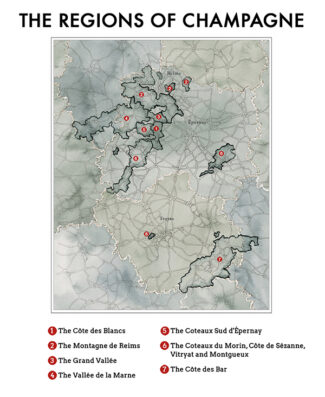
From north to south, the sub-regions are The Montagne de Reims, The Grand Vallée, Vallée de la Marne, The Coteaux Sud d’Épernay, The Côte des Blancs, The Coteaux du Morin, Côte de Sézanne, Vitryat & Montgueux and Côte des Bar in the Aube.
The last region is notable not only for being closer to Chablis than to Rheims, but because prior to World War II, it was planted primarily to Gamay. Once they saw the light, those vineyards were re-established with Pinot Noir, and nearly 90% of Côte des Bar’s modern vineyards are planted to that grape. The fact that the soils of Côte des Bar is composed almost entirely of Kimmeridgian marl means that the terroir is much closer to Chablis, Sancerre and Pouilly Fumé, regions heavily associated with white wines.
That is only one of the iconoclastic tendencies displayed by Champagne’s most intriguing wine region, which has grown exponentially in size and reputation over the past twenty years.
South Rising: Aube’s Côte des Bar For The Course
|
|
| (Since the Côte des Bar is the Aube’s only significant wine producing area, the two names are generally interchangeable in winemaking discussions.)
‘Aube’ translates to ‘dawn’, so it is fitting that this district is Champagne’s rising star. In part this is because of the district’s push towards a culture of artisanal, experimental, terroir-driven Champagne. Situated further south than the other six regions, it is less prone to frost and the Pinot Noirs of the Aube are rich and fruit-driven. Although the district is devoid of Grand or Premier Cru vineyards, since the 1950s, grapes grown there have formed a vital backbone of the blend produced by many of the top Champagne houses.
Perhaps the lack of a historical reputation means that the AOP has less to lose, but the overall mindset of the region encourages mavericks, which in tradition-heavy Champagne is rarely seen. It is these independent winemakers that are primarily responsible for district’s mushrooming growth, which now makes up almost a quarter of the entire Champagne region.
The vines of the Côte des Bar can be found scattered patches within two main districts, the Barséquenais, centered on Bar-sur-Seine, and the Barsuraubois, centered on Bar-sur-Aube.
Helping to forge the region’s new identity is a crew of younger grower/producers and boutique négociants, many of whom have traveled abroad and trained in other winemaking regions. As a result, they tend to focus more on individuality; single-variety, single-vintage, single-harvest and single-vineyard Champagnes from the Côte des Bar are quite common. Not only that, but land remains relatively inexpensive, which encourages experimentation. Even though many of Côte des Bar’s Champagnes are 100% Pinot Noir, styles can differ markedly from producer to producer, bottling to bottling and, of course, vintage to vintage. |
|
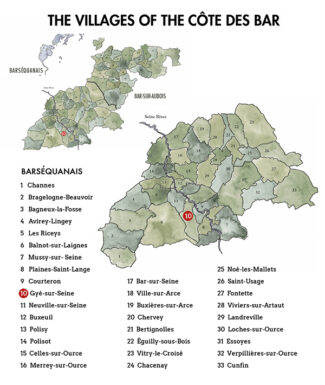
Exploring Pinot Country: It’s The Terroir Stupid!
|
|
| Michael Edwards, the lawyer turned ‘Decanter’ Champagne pro, writes, “The Aube’s semi-continental climate, the close proximity of water, and its soils of calcareous clay and Portlandian limestone combine to shape wines that have more in common with Chablis than with any from Reims or Épernay. The main wine grape may be Pinot Noir rather than Chardonnay, but it’s really the terroir rather than the grape variety that speaks most originally to the taster. The extra summer warmth in the Aube endows Pinot Noir with a round, overt fruit character rarely found further north and gives Aube Champagnes their characteristic color, mid-straw as opposed to pale green. Traditionally, Aube wine was used by the Marne houses as a softener or bolsterer of a blend, but this was kept quiet from Marne growers. Even today rivalry is fierce, with the Marne houses viewing wine from the “inferior” Aube as ‘Champagne du Sud.”
For the most part, Aube elevations are low-lying, with the valleys prone to frosts, so the best Champagnes produced from a handful of vineyards well-situated on the steeper slopes of hillsides under a thousand feet in height. The best sites face south-east, but there is nothing sacred about planting to this aspect alone, and vineyards in the district can be found at most suitable elevations. |
|
(Village Gyé-sur-Seine, Côte des Bar)
|
|
Gyé-sur-Seine is a small village in the Aube department, with a population under 500 and about the same number of acres planted to Pinot Noir. The commune is as picturesque as its name, as are the hillsides where Jean Josselin worked the soil—Beauregard, Davasgné, Cosvigne—before founding the house in 1957.
Today, the estate is run by his son Jean-Pierre and grandson Jean-Félix and granddaughter Lucile, who have maintained the rigid standards of their forebears. At time, admittedly, they have struggled to remain independent producers rather than succumb to the temptations dangled by the grand marques; financial incentives that saw one producer in the village recently sold to Moët et Chandon. Remaining independent has involved extensive upgrades, including the new production facilities—a modern building about a mile away from the old domain. The family also takes pride in its commitment to sustainable viticulture, and is proud to be certified to ‘Terra Vitis’, a label that subjects the estate to regular audits scalable to the size of the property—in the case of Champagne Josselin,18 parcels scattered over 30 acres.
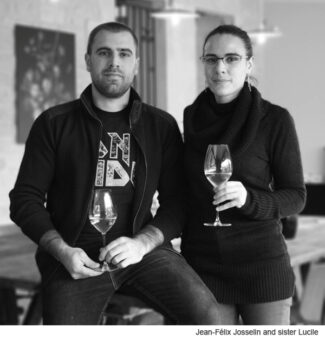
| Says Jean-Pierre, “In the past, Josselin Champagnes were mostly made from Pinot Noir, but we have expanded our range with a blend of the three traditional varietals as our Blanc de Blancs, thus exploring the other varietals that grow well in specific locations. We are a small producer—no more than 100,000 bottles a year—but we are always looking to improve. For instance, my son Jean-Félix, who joined the family operation in 2010, has created a new cuvée, as yet unnamed. It’s a secret waiting to be uncovered, as many ideas arise and provoke discussion between father and son! The adventure is far from over!”
|
|
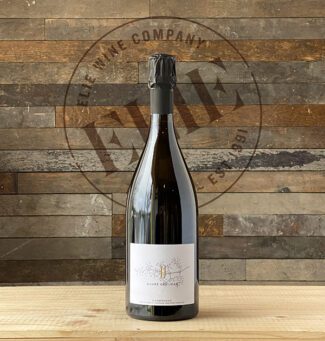 Champagne Jean Josselin ‘Cuvée des Jean’ ($50)
Champagne Jean Josselin ‘Cuvée des Jean’ ($50)
Three generations of ‘Jean’ lent equity and their name to this blend: Jean Josselin (founder), Jean-Pierre (owner) and Jean-Félix (winemaker). Bottled on December 7, 2019, it is made from 100% Pinot Noir, with 70% from the 2017 récolte (harvest) used as a base wine and 30% from the solera—wine the family keeps in perpetual reserve. This is a pure, clean, driven Champagne that still maintains the signature coolness of Pinot Noir fruit. Bright and elegant, the citrus-colored Champagne offers a precise and fresh nose with white peach notes and strawberry aromas. 50,000 bottles produced.
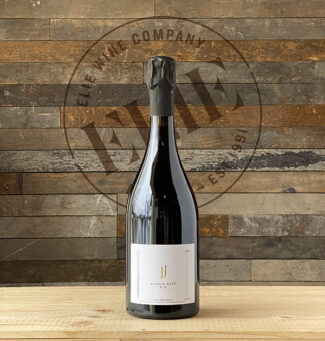 Champagne Jean Josselin ‘Audace R.19’ Rosé ($68)
Champagne Jean Josselin ‘Audace R.19’ Rosé ($68)
100% Pinot Noir; récolte 2019. The name means ‘audacity’ and the wine is from a single high-elevation parcel, Beauregard. 30% of the grapes undergo cold maceration for a minimum of 24 hours while the rest are pressed in the traditional stainless steel Coquard basket press personally modified by Jean-Pierre. The result of a careful assembly of macerated and non-macerated juice is a dazzling pomegranate pink rosé that oozes cranberries, red currants and spring raspberries, finishing with saline and mineral notes. About 5000 bottles produced, though only in certain vintages.
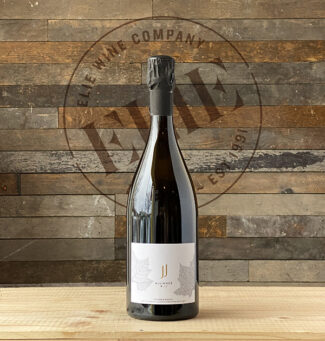 Champagne Jean Josselin ‘Alliance R.17’ ($58)
Champagne Jean Josselin ‘Alliance R.17’ ($58)
70% Pinot Noir and 30% Chardonnay; récolte 2017. So-called because of the marriage, or alliance, between these traditional Champagne varieties. To be labeled ‘vintage’, the wine must spend three years ‘sur lattes’—lattes are the thin wooden strips between the layers of bottles stacked on their sides in the cellars of Champagne, so the Champagne phrase translates to ‘on the strips’. The wine displays a golden hue with silver highlights while a subtle nose opens with ethereal hints of rose petals and brioche. The palate evolves to reveal honey and apple jelly. 9000 bottles produced.
The three-bottle pack is comprised of one bottle of each of the above listed cuvées for $176.
Chardonnay in A Sea of Pinot Noir
|
|
| In Champagne as a whole, Chardonnay represents about 25,000 acres, behind Pinot Meunier at 26,000 acres. A fruitier, earlier-maturing relative of Pinot Noir, only Pinot Meunier will ripen reliably throughout the region, and is the most planted variety in the cooler vineyards of the Marne valley and the outlying Aisne vineyards to the north.
The cool climate results in base-wine Chardonnay with a delicate fragrance, along with floral, butter, and citrus notes, which adds racy acidity and structure to a blend. It is not often vinified as a mono-varietal.
In the Aube, Chardonnay represents about 10% of the plantings, but at Champagne Jean Josselin, the percentage is higher. |
|
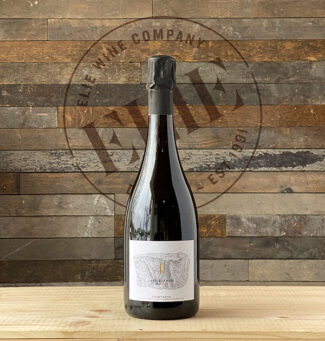 Champagne Jean Josselin ‘Les Blancs’ 2016 ($77)
Champagne Jean Josselin ‘Les Blancs’ 2016 ($77)
100% Chardonnay, bottled July 16, 2017. Vines were planted in the 1980s on soils without chalk, producing a wine lower in acid than those from nearby Marne. At a modest dosage of 4 grams per liter, the wine is labeled Extra Brut, but complete malolactic fermentation and three years’ aging sur lattes adds a balanced texture and depth to what might otherwise be a much leaner Champagne. It has fresh floral aromas with notes of ripe apple, spice, and a touch of butter enriched by fine, lively bubbles. Overall, it is crisp, elegant, and complex, with good minerality from the limestone soil and a nice long finish.
The Champagne Society
Members Only Selection – April 2022
As a member of The Champagne Society, you’re in a select community of like-minded folks who appreciate the exceptional in life and recognize that sparkling wine is a superlative among man’s culinary creations. Cuvée ‘Aux Origines’ is selected for members only. None is available for sale.
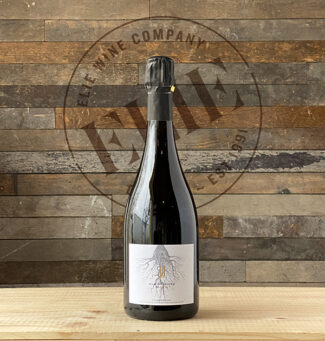 Champagne Jean Josselin ‘Aux Origines’ 2016 ($71) 100% Pinot Noir
Champagne Jean Josselin ‘Aux Origines’ 2016 ($71) 100% Pinot Noir
Formerly named ‘Cordon Royale’, this 100% Pinot Noir originates from the most highly prized of Josselin parcels; it bottled July 17, 2017, dosed at 4.85 grams per liter. Pinpoint bubbles and a seamless texture only enhance the spectacular wine underneath, bursting with minerality and clean earth flavors effortless balanced with warm, buttered croissant, honeyed baked pear and a touch of cinnamon and licorice. 5,000 bottles made.
- - -
Posted on 2022.03.13 in France, The Champagne Society, Champagne, Wine-Aid Packages



 Champagne Jean Josselin ‘Cuvée des Jean’ ($50)
Champagne Jean Josselin ‘Cuvée des Jean’ ($50) Champagne Jean Josselin ‘Audace R.19’ Rosé ($68)
Champagne Jean Josselin ‘Audace R.19’ Rosé ($68) Champagne Jean Josselin ‘Alliance R.17’ ($58)
Champagne Jean Josselin ‘Alliance R.17’ ($58) Champagne Jean Josselin ‘Les Blancs’ 2016 ($77)
Champagne Jean Josselin ‘Les Blancs’ 2016 ($77) Champagne Jean Josselin ‘Aux Origines’ 2016 ($71) 100% Pinot Noir
Champagne Jean Josselin ‘Aux Origines’ 2016 ($71) 100% Pinot Noir


